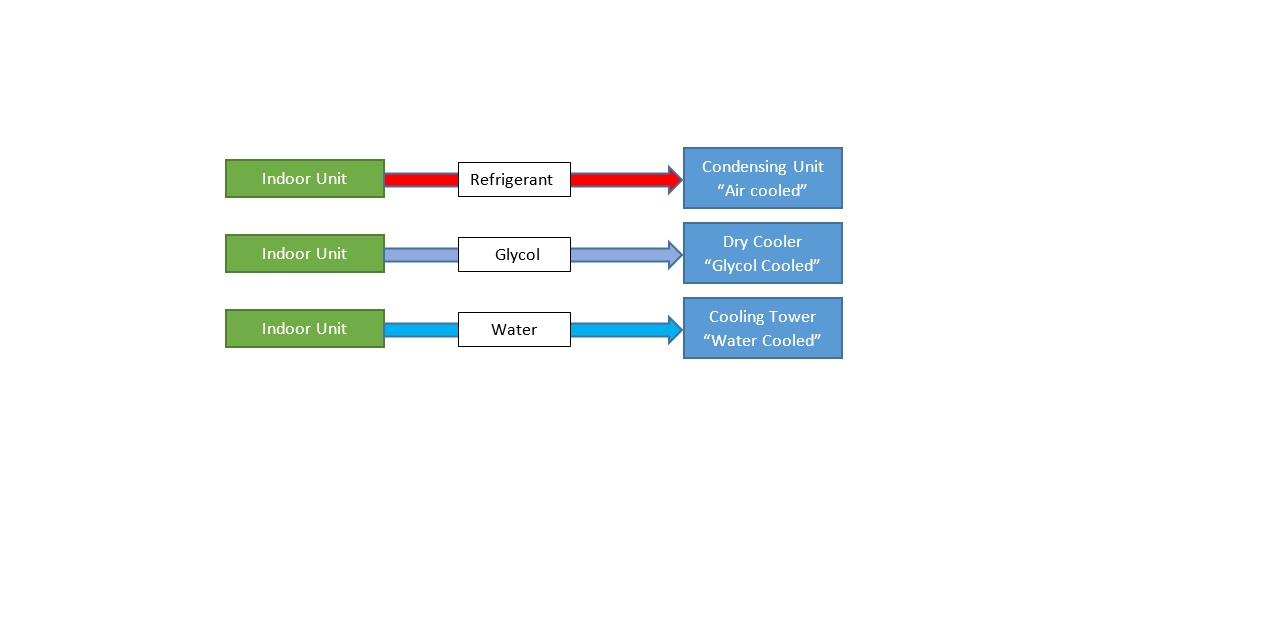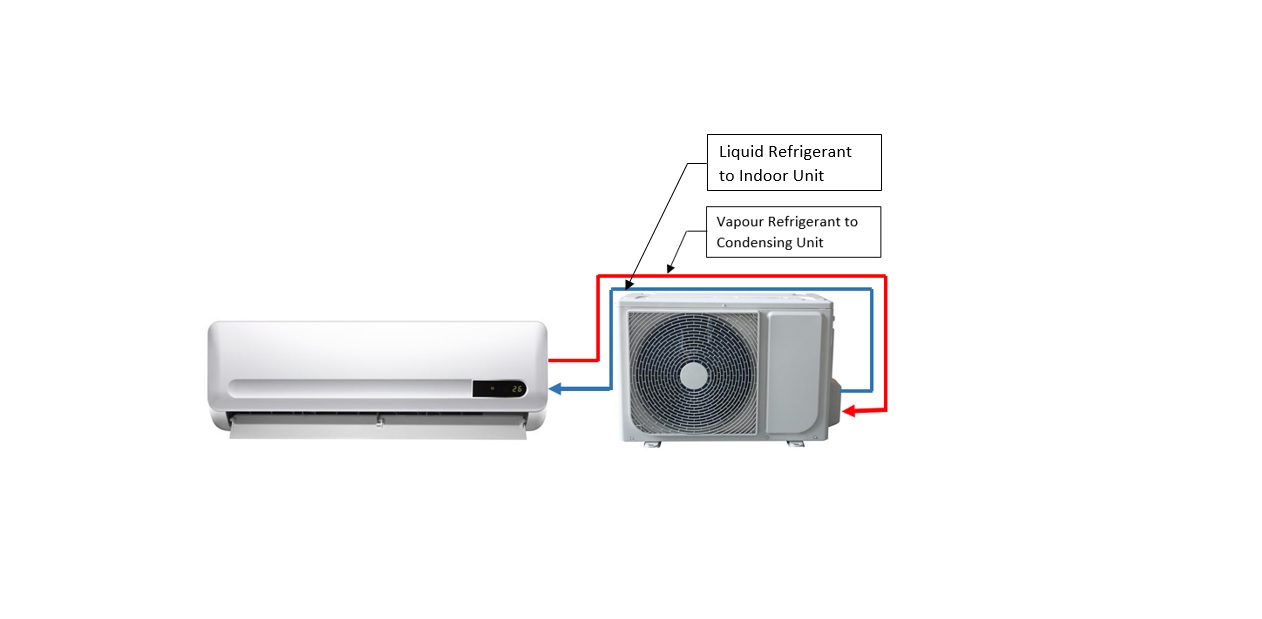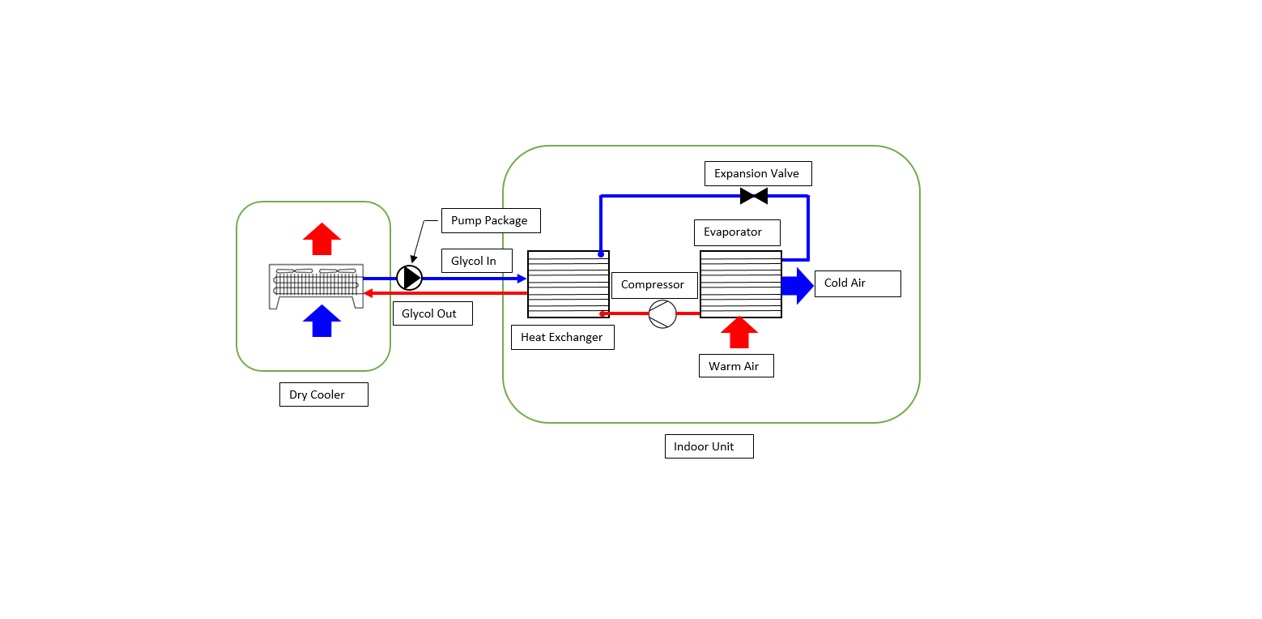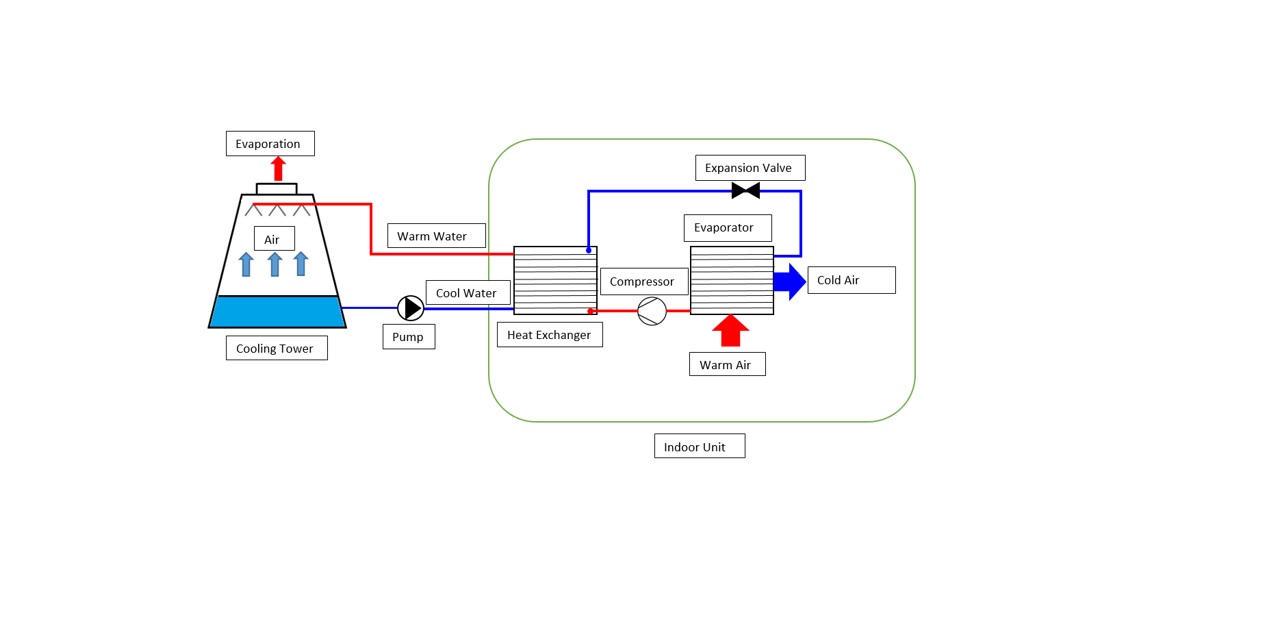Let's discuss the differences between a dry cooler and a condenser cooler. First, recall how the refrigeration cycle works. We go into further detail of the cycle, in our article, “ Examining High Suction Pressure" but to summarize the cycle the cooling process - the liquid refrigerant (which is cooler than the temperature of the room) flows in the indoor unit (evaporator) which is nothing but a coil and fan. By the help of the fan, the air inside the room is circulated around the coil. The heat transfers from the air to the refrigerant, absorbing the heat, and causing the temperature of the refrigerator to rise. This leaves the evaporator in vapor state (superheated) to the compressor, which increases the pressure of the refrigerant and will circulate it. Now the heat absorbed by refrigerant should be released to get cooled back.
This is where our discussion starts, there are 3 methods to remove this heat. Fig.1 summarizes those methods: air cooled in the condensing unit, glycol cooled in dry cooler, and water cooled in cooling tower.

Fig. 1: Heat Removal Methods
We can think of heat removal as the process of “moving” heat energy from refrigerant to the outdoors. As illustrated in Fig. 1, there are two major heat energy “movement” points - indoor and outdoor with a transport fluid in between (liquid or gas). The transport fluid carries the heat energy between the two points. The following sections provide a detailed look at the systems that incorporate these methods and describe the individual heat energy transfers.
1. Condenser Cooler Unit:
Most A/C’s we see in residential and small to medium size commercial buildings are split units which consists of two units: indoor unit (evaporator) and outdoor unit (condensing unit). Compressors can be either included in the indoor unit or in the outdoor unit, when it comes with the outdoor unit, the outdoor unit is called “condensing unit”, otherwise it is just a condenser. As illustrated in Fig.1, the refrigerant travels to the outdoor unit to release the heat. The refrigerant flows in the condenser which is nothing but a coil and fan, the temperature of the refrigerant is lower than the temperature of the outdoor air. By the help of the fan, the outdoor air is circulated around the coil, heat is going to transfer from the vapor refrigerant to the air. As a result, the temperature of the refrigerant will drop, and the heat will be removed from the refrigerant.
For example, take a look at the split unit Pridiom (PMS225CO), with a capacity of 22000 BTU in Fig 2. It shows the refrigerant travels from the indoor unit as a vapor and travels back from the condenser cooler unit as liquid after heat rejection.

Fig. 2: Split Air Conditioner, Indoor unit (Left), Outdoor unit (Right)
Advantages:
- Lowest overall price.
- Easy to maintain.
Disadvantages:
- Refrigerant pipes to be installed onsite. Careful consideration should be taken in regards to distance between indoor and outdoor units, and vertical elevations.
- Refrigerant cannot run for long distances.
- Can provide max. 200 Kw cooling.
2. Dry coolers:
This system keeps all refrigeration cycle components in one enclosure (indoor unit) but replaces the bulky condensing coil with a much smaller heat exchanger, see Fig. 3. The heat exchanger uses flowing glycol (a mixture of water and ethylene glycol, similar to automobile anti-freeze) to collect heat from the refrigerant and transport it away from the space to be cooled. Heat exchangers and glycol pipes are always smaller than condensing coils found in air cooled systems because the glycol mixture has the capability to collect and transport much more heat than air does. The glycol flows via pipes to a dry cooler where the heat is rejected to the outside atmosphere. A pump package (pump, motor, and protective enclosure) is used to circulate the glycol in its loop to and from the glycol-cooled indoor unit and dry cooler (outdoor unit).

Fig. 3: Glycol Cooled System, Dry Cooler
Advantages:
- The entire refrigeration cycle is contained inside the indoor unit as a factory-sealed and tested system for highest reliability with the same floor space requirement as the indoor unit of split system. Easy to maintain.
- Glycol pipes can run much longer distances than refrigerant lines (air-cooled split system) and can service several indoor units from one dry cooler and pump package.
- For applications requires cooling the entire time of the year, in cold locations, the glycol within the dry cooler can be cooled so much (below 10°C [50°F]) that it can bypass the heat exchanger in the indoor unit and flow directly to a specially installed economizer coil. Under these conditions, the refrigeration cycle is turned off and the air that flows through the economizer coil, now filled with cold flowing glycol, cools the space environment. This economizer mode, also known as “free cooling”, provides excellent operating cost reductions when used.
Disadvantages:
- Additional required components (pump package, valves) raise capital and installation costs when compared with air-cooled split units system.
- Maintenance of glycol volume and quality within the system is required.
- Can provide max. 1000 Kw cooling
3. Cooling Towers:
This combination is generally known as a water-cooled system. Water-cooled systems are very similar to glycol-cooled systems in that all refrigeration cycle components are located inside the indoor unit, see Fig.4. However, there are two important differences between a glycol-cooled system and a water-cooled system:
- A water loop is used instead of glycol to collect and transport heat away from the space environment.
- Heat is rejected to the outside atmosphere via a cooling tower instead of a dry cooler

Fig. 4: Water Cooled System, Cooling Tower
Advantages:
- All refrigeration cycle components are contained inside the indoor unit as a factory-sealed and tested system for highest reliability.
- Condenser water piping loops are easily run long distances.
- Same as for dry coolers, cooling tower can provide free cooling for the spaces requires cooling the entire time of the year in cold locations.
- Compared to dry coolers, cooling towers can remove heat below the ambient temperature.
Disadvantages:
- High initial cost for cooling tower, pump, and piping systems.
- Higher maintenance costs due to frequent cleaning and water treatment requirements.
